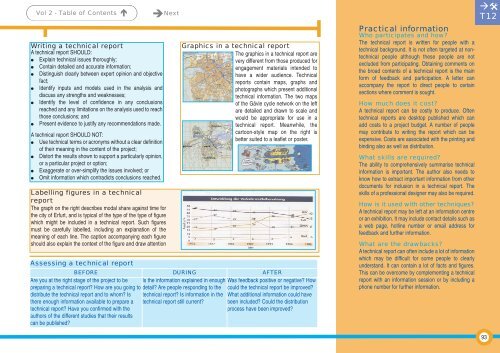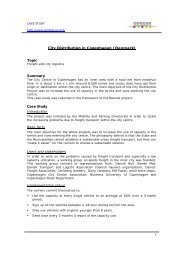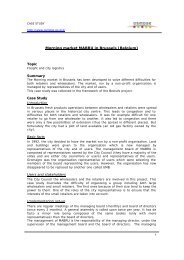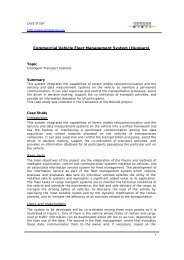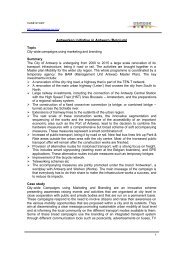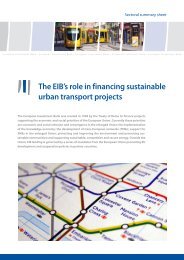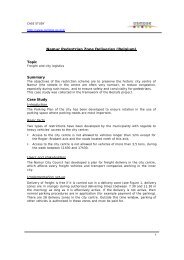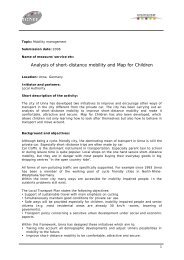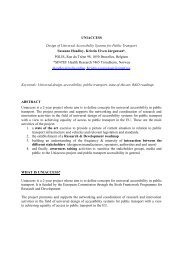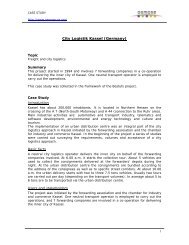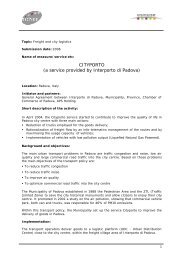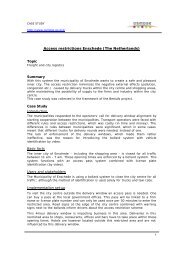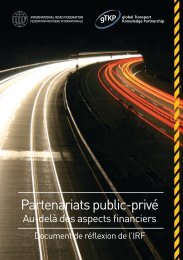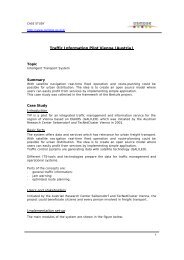Successful transport decision-making - Osmose
Successful transport decision-making - Osmose
Successful transport decision-making - Osmose
You also want an ePaper? Increase the reach of your titles
YUMPU automatically turns print PDFs into web optimized ePapers that Google loves.
Vol 2 - Table of Contents Next Practical information<br />
Who participates and how?<br />
Writing a technical report<br />
A technical report SHOULD:<br />
Explain technical issues thoroughly;<br />
Contain detailed and accurate information;<br />
Distinguish clearly between expert opinion and objective<br />
fact;<br />
Identify inputs and models used in the analysis and<br />
discuss any strengths and weaknesses;<br />
Identify the level of confidence in any conclusions<br />
reached and any limitations on the analysis used to reach<br />
those conclusions; and<br />
Present evidence to justify any recommendations made.<br />
A technical report SHOULD NOT:<br />
Use technical terms or acronyms without a clear definition<br />
of their meaning in the content of the project;<br />
Distort the results shown to support a particularly opinion,<br />
or a particular project or option;<br />
Exaggerate or over-simplify the issues involved; or<br />
Omit information which contradicts conclusions reached.<br />
Labelling figures in a technical<br />
report<br />
The graph on the right describes modal share against time for<br />
the city of Erfurt, and is typical of the type of the type of figure<br />
which might be included in a technical report. Such figures<br />
must be carefully labelled, including an explanation of the<br />
meaning of each line. The caption accompanying each figure<br />
should also explain the context of the figure and draw attention<br />
Graphics in a technical report<br />
The graphics in a technical report are<br />
very different from those produced for<br />
engagement materials intended to<br />
have a wider audience. Technical<br />
reports contain maps, graphs and<br />
photographs which present additional<br />
technical information. The two maps<br />
of the Gävle cycle network on the left<br />
are detailed and drawn to scale and<br />
would be appropriate for use in a<br />
technical report. Meanwhile, the<br />
cartoon-style map on the right is<br />
better suited to a leaflet or poster.<br />
to what the reader should learn from it.<br />
Assessing a technical report<br />
BEFORE DURING AFTER<br />
Are you at the right stage of the project to be Is the information explained in enough Was feedback positive or negative? How<br />
preparing a technical report? How are you going to detail? Are people responding to the could the technical report be improved?<br />
distribute the technical report and to whom? Is<br />
there enough information available to prepare a<br />
technical report? Have you confirmed with the<br />
authors of the different studies that their results<br />
can be published?<br />
technical report? Is information in the<br />
technical report still current?<br />
What additional information could have<br />
been included? Could the distribution<br />
process have been improved?<br />
The technical report is written for people with a<br />
technical background. It is not often targeted at nontechnical<br />
people although these people are not<br />
excluded from participating. Obtaining comments on<br />
the broad contents of a technical report is the main<br />
form of feedback and participation. A letter can<br />
accompany the report to direct people to certain<br />
sections where comment is sought.<br />
How much does it cost?<br />
A technical report can be costly to produce. Often<br />
technical reports are desktop published which can<br />
add costs to a project budget. A number of people<br />
may contribute to writing the report which can be<br />
expensive. Costs are associated with the printing and<br />
binding also as well as distribution.<br />
What skills are required?<br />
The ability to comprehensively summarise technical<br />
information is important. The author also needs to<br />
know how to extract important information from other<br />
documents for inclusion in a technical report. The<br />
skills of a professional designer may also be required.<br />
How is it used with other techniques?<br />
A technical report may be left at an information centre<br />
or an exhibition. It may include contact details such as<br />
a web page, hotline number or email address for<br />
feedback and further information.<br />
What are the drawbacks?<br />
A technical report can often include a lot of information<br />
which may be difficult for some people to clearly<br />
understand. It can contain a lot of facts and figures.<br />
This can be overcome by complementing a technical<br />
report with an information session or by including a<br />
phone number for further information.<br />
<br />
T12<br />
93


